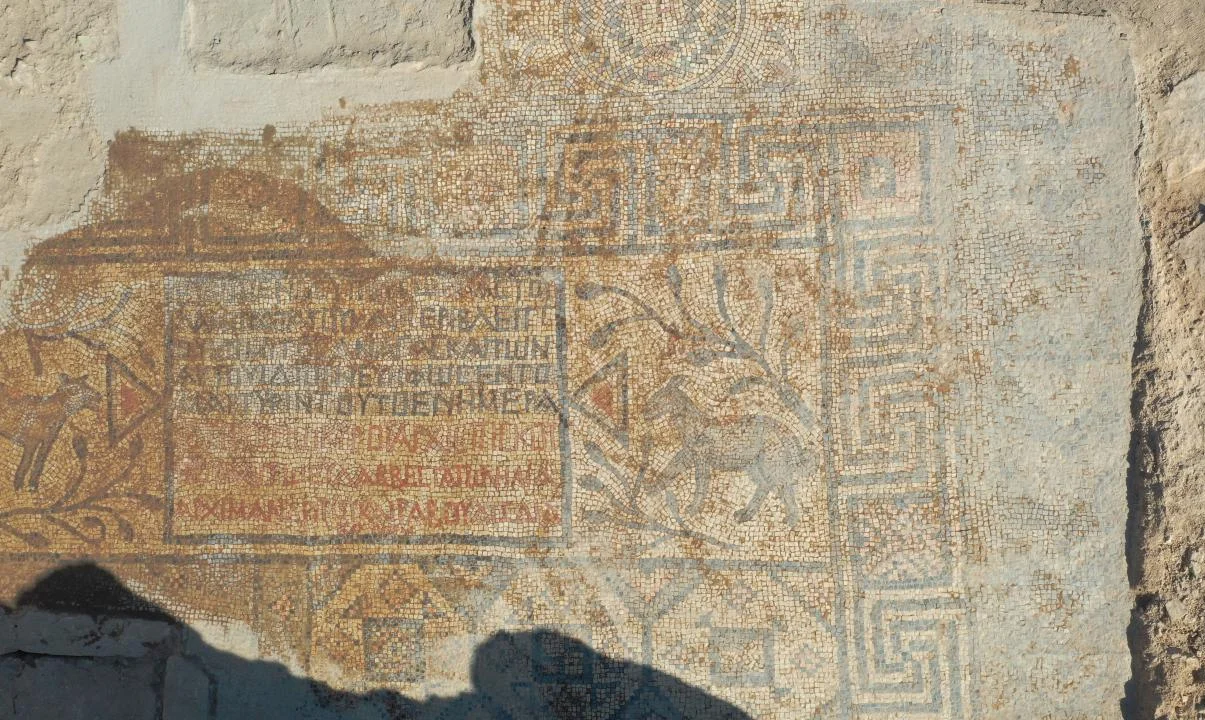Archaeologists have uncovered a 1,500-year-old mosaic during excavations of the Urfa Citadel in the provincial capital of Şanlıurfa, Turkey.
Most of the surviving ruins of the citadel were constructed by the Abbasids during the 9th century AD, with multiple phases of extensions and refortifications taking place as the castle changed hands between the Persians, Byzantines, Armenians, and Crusaders.
Recent excavations within the upper citadel interior have revealed an ornate mosaic, which experts have dated to the late Roman/Early Byzantine period around 1,500-years-ago.
The discovery was made during the final phase of this season’s excavations as part of the “Heritage for the Future Project” carried out with the support of the Ministry of Culture and Tourism.
The mosaic features floral motifs, animal figures, and geometric elements made from black, red, and white tesserae blocks, which was likely the floor of a church or chapel known as a martyrium.
Martyriums were traditionally constructed over the tombs of Christian martyrs; however, in later periods, some were built to enshrine the sacred relics of saints instead.
According to excavation Director and Batman University Faculty Member Prof. Dr. Gülriz Kozbe, an inscription found on the mosaic names the person who commissioned it for family projection, as well as this person’s rank in the church.
Authorities announced that a specialised restoration team has been appointed to preserve the mosaic, which is expected to be displayed at the Şanlıurfa Archaeology Museum in the near future.
Header Image Credit : Batman University
Sources : Batman University





